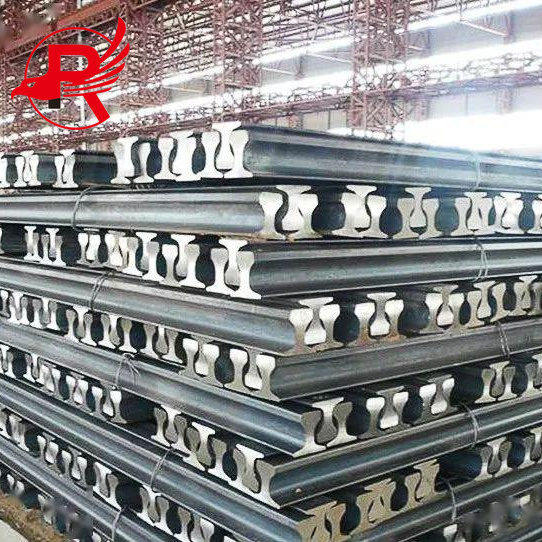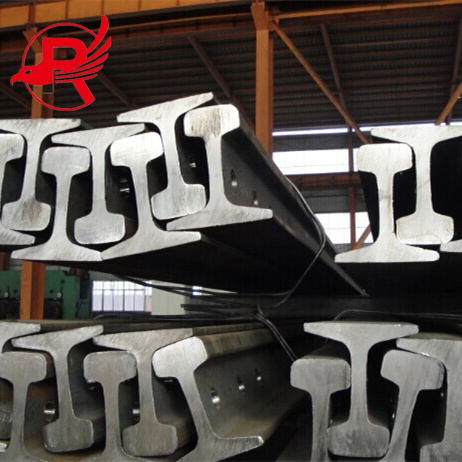As we travel from one place to another, we often take for granted the intricate network of railway infrastructure that enables the smooth and efficient operation of trains. At the heart of this infrastructure are the steel rails, which form the fundamental component of railway tracks. Among the various types of steel rails available, those that adhere to the BS standard play a crucial role in ensuring the safety and reliability of railway systems.
BS standard steel rail, also known as British Standard Rails, are designed and manufactured in accordance with the specifications set by the British Standards Institution (BSI). These rails are engineered to meet stringent quality and performance requirements, making them an essential choice for railway construction and maintenance projects. The adherence to the BS standard signifies a commitment to excellence, durability, and consistency in the production of steel rails, ultimately contributing to the overall efficiency and safety of railway operations.
One of the key advantages of BS standard steel rails is their superior strength and durability. These rails are constructed using high-quality steel materials and undergo rigorous testing to ensure their ability to withstand heavy loads, extreme weather conditions, and constant wear and tear. As a result, they offer exceptional resistance to deformation, cracking, and corrosion, thereby extending the lifespan of railway tracks and minimizing the need for frequent replacements or repairs. This durability is essential for maintaining the integrity of railway infrastructure and preventing disruptions to train services.
| BS11:1985 standard rail | |||||||
| model | size (mm) | substance | material quality | length | |||
| head breadth | altitude | baseboard | waist depth | (kg/m) | (m) | ||
| A(mm) | B(mm) | C(mm) | D(mm) | ||||
| 500 | 52.39 | 100.01 | 100.01 | 10.32 | 24.833 | 700 | 6-18 |
| 60 A | 57.15 | 114.3 | 109.54 | 11.11 | 30.618 | 900A | 6-18 |
| 60R | 57.15 | 114.3 | 109.54 | 11.11 | 29.822 | 700 | 6-18 |
| 70 A | 60.32 | 123.82 | 111.12 | 12.3 | 34.807 | 900A | 8-25 |
| 75 A | 61.91 | 128.59 | 14.3 | 12.7 | 37.455 | 900A | 8-25 |
| 75R | 61.91 | 128.59 | 122.24 | 13.1 | 37.041 | 900A | 8-25 |
| 80 A | 63.5 | 133.35 | 117.47 | 13.1 | 39.761 | 900A | 8-25 |
| 80 R | 63.5 | 133.35 | 127 | 13.49 | 39.674 | 900A | 8-25 |
| 90 A | 66.67 | 142.88 | 127 | 13.89 | 45.099 | 900A | 8-25 |
| 100A | 69.85 | 152.4 | 133.35 | 15.08 | 50.182 | 900A | 8-25 |
| 113A | 69.85 | 158.75 | 139.7 | 20 | 56.398 | 900A | 8-25 |
In addition to their robust construction, steel rails are designed to meet precise dimensional and geometric tolerances. This level of precision is critical for ensuring the smooth and stable movement of trains along the tracks. By adhering to the BS standard specifications, these rails are manufactured with consistent cross-sectional profiles, straightness, and alignment, which are essential for minimizing track irregularities and maintaining optimal contact between the wheels of the trains and the rails. The precise geometry of BS standard steel rails contributes to the overall safety and comfort of railway travel, reducing the risk of derailments and enhancing the overall operational efficiency of the railway network.
Furthermore, the adherence to the BS standard ensures that steel rails undergo thorough quality control measures throughout the manufacturing process. From the selection of raw materials to the final inspection of finished rails, strict adherence to the standard guarantees that the rails meet the required mechanical properties, chemical composition, and performance characteristics. This level of quality control is essential for instilling confidence in the reliability and performance of BS standard steel rails, providing railway operators and infrastructure managers with the assurance that the rails will consistently meet the demands of heavy-duty train operations.
The significance of BS standard steel rails extends beyond their physical attributes, as they also play a crucial role in promoting interoperability and standardization within the global railway industry. By adhering to a recognized and respected standard such as the BS standard, railway infrastructure projects can benefit from compatibility with a wide range of rolling stock, signaling systems, and maintenance equipment that are designed to interface seamlessly with rails that meet the same standard. This interoperability simplifies the procurement, installation, and maintenance processes for railway infrastructure, ultimately leading to cost savings and operational efficiencies for railway operators and authorities.


In conclusion, the utilization of BS Standard Rail is paramount for the development, expansion, and maintenance of modern railway infrastructure. These rails embody the principles of quality, durability, precision, and interoperability, all of which are essential for ensuring the safe and efficient operation of railway networks. As the demand for reliable and high-performance railway systems continues to grow, the role of BS standard steel rails in shaping the future of rail transportation cannot be overstated. By upholding the standards set by the British Standards Institution, the railway industry can continue to rely on the proven capabilities of BS standard steel rails to support the movement of people and goods with confidence and reliability.
Post time: May-23-2024
